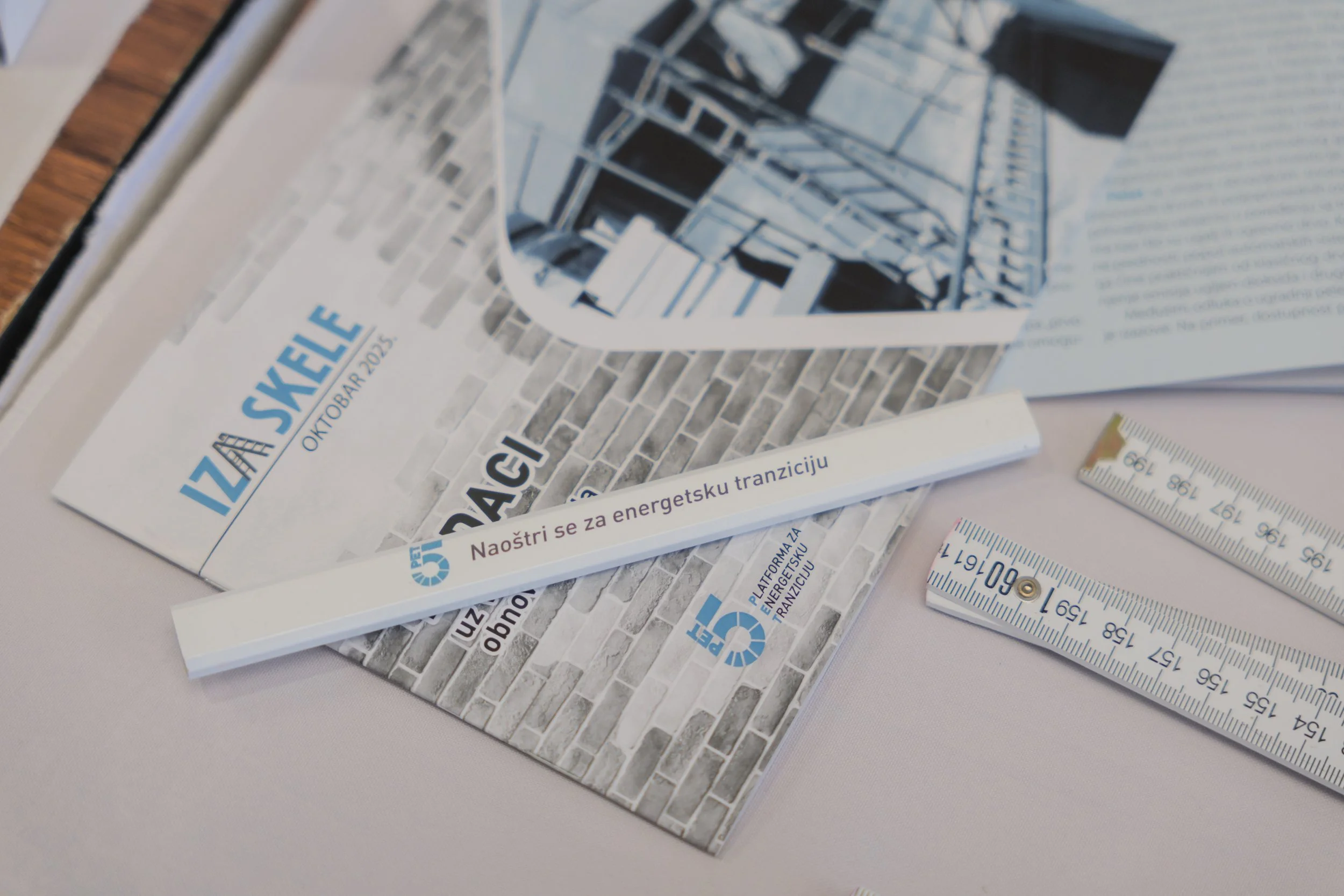Behind the Construction – Demystifying Renovation of Buildings
Tired of high energy bills and drafty homes? It's time to unlock the secrets to a warmer, cheaper, and more comfortable living space!
We've done the heavy lifting and put together everything you need to know in our new, comprehensive Building Renovation Guide (Vodič za obnovu zgrada). This essential resource was developed as part of the "Energy Managers in Local Energy Transition" project, supported by German Development Cooperation in Serbia and implemented by the Deutsche Gesellschaft für Internationale Zusammenarbeit (GIZ) GmbH in partnership with the Ministry of Mining and Energy of the Republic of Serbia.
This Guide is your essential tool for understanding what happens "Behind the Construction" (Iza skele)—the crucial preparation, technical details, and potential challenges of energy-efficient renovation.
Why Renovate? The Benefits of Stepping "Behind the Construction"
Living in an energy-efficient building means higher comfort with lower costs. For the majority of buildings in Serbia, renovation is vital because:
It leads to lower energy costs in the coming years.
It ensures a higher property value.
It creates better comfort by eliminating cold spots and reducing noise.
It is key to reducing GHG emissions and air pollution.
It extends the building's lifespan.
The Guide is designed for citizens without prior experience and Local Self-Government Units (LSG) staff, to inform and clarify the renovation process.
The Renovation Journey in 4 Key Steps
The Guide simplifies the process, whether you own a multi-family building or a single-family house:
1. The Starting Line: Initial Decisions and Costs
Find Help: LSG have a legal obligation to provide advisory assistance for energy efficiency improvements, often through Info-Centres for Energy Efficiency (OSS).
Financial Effects: Energy efficiency improvements are always a worthwhile investment. Current national programs, like the SURCE Project (supported by the World Bank) and the Public ESCO Project (funded by the EBRD), offer grants and subsidies to cover initial costs.
2. Planning Smartly: Documentation and Permits
Technical Documents: You need to hire a licensed engineer (license 381) to conduct a detailed energy audit and prepare an Energy Efficiency Elaborate.
Permits: For many energy-saving works, such as basement/wall insulation, replacing windows/doors, or internal heating system interventions, a full building permit is not required. Instead, a Decision on Approval for Execution of Works is needed.
Approval: For multi-family buildings, the building manager must obtain prior consent from 2/3 of the owners of separate units to submit the application.
3. Execution: What to Expect During Construction
Duration and Disruption: Renovation can last for several months, turning the building into a construction site with scaffolding, dust, and noise.
Managing Delays: If the works run too long, the owner/building manager has the right to enforce penalties or terminate the contract with the contractor.
Unexpected Works: Be prepared for additional, unforeseen structural issues (e.g., on the roof or construction) that may require new consents and additional budgeting, especially in older buildings.
4. Post-Renovation Life: Long-Term Savings and Maintenance
Loan Repayment: Loan repayment can be the longest phase, potentially lasting more than 10 or 15 years.
System Maintenance: Newly installed systems like heat pumps, circulation pumps, and solar panels require regular maintenance to retain their efficiency and functional lifespan.
User Education: Achieving maximum savings depends on user education - tenants must know how to properly use and adjust the new electronic regulation devices.
Download Your Essential Guides Now
Take the first step toward a warmer, more cost-effective, and energy-efficient home. Download your guides and visit our project page for more information:



